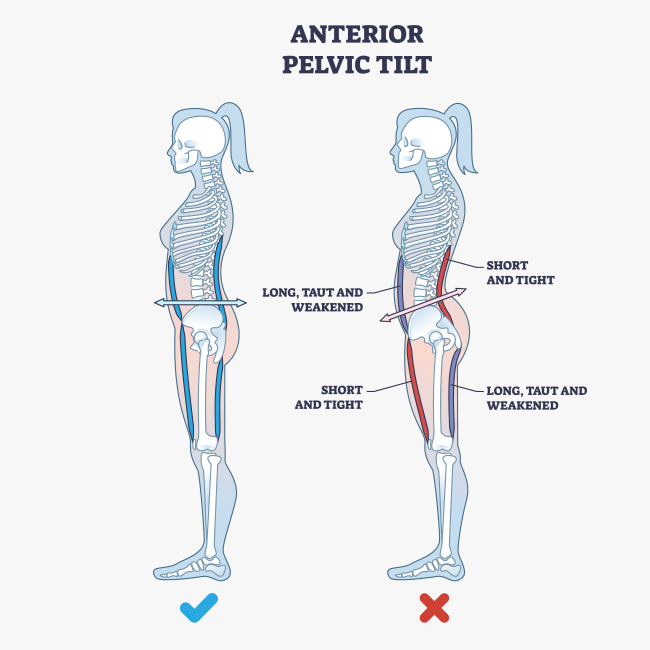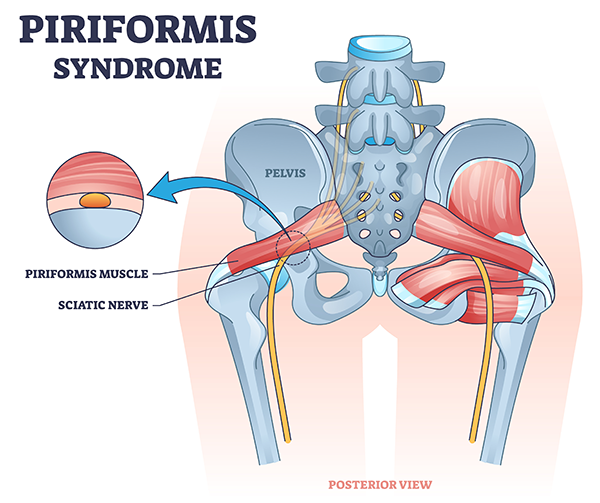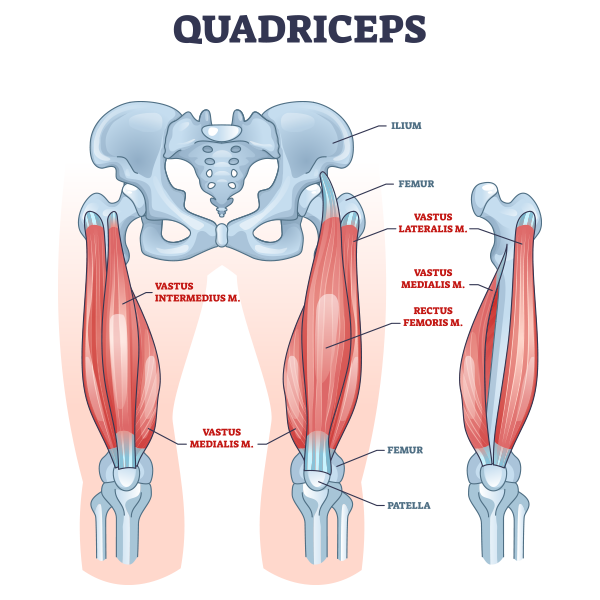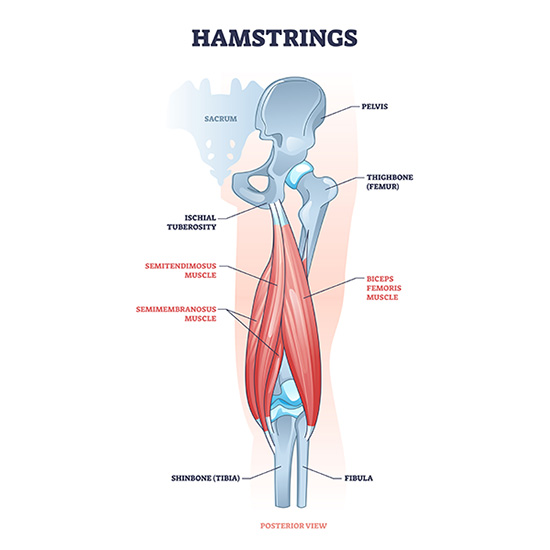The Importance of Understanding
The Musculoskeletal System for Health and Wellness
At Kusala Healing Arts, we believe that understanding the musculoskeletal system is key to maintaining a healthy body and mind. This page provides monthly insights into key muscle groups, such as the neck, shoulders, and lower back – areas commonly associated with chronic pain complaints. By exploring how these muscle groups function and how therapeutic massage can relieve chronic tension, improve range of motion, and address issues like neck stiffness, shoulder pain, or lower back discomfort, you’ll learn how massage supports a preventive pain management plan. By understanding the muscles that keep you moving, you’ll discover how therapeutic massage plays a vital role in alleviating discomfort and promoting long-term physical and mental well-being.

Anterior Pelvic Tilt
Anterior pelvic tilt is a condition where the front of the pelvis tilts forward, causing an exaggerated curve in the lower back. This can lead to discomfort or pain in the lower back, hips, and even the knees. The muscles involved include tight hip flexors (like the iliopsoas and rectus femoris) and weak glutes and hamstrings, along with an overarched lower back due to tight lower back muscles and weak abdominal muscles.
Therapeutic massage helps alleviate pain from anterior pelvic tilt by targeting and relaxing the tight muscles causing the tilt, such as the hip flexors and lower back muscles. Massage also helps improve blood flow to these areas, reducing tension and promoting better muscle balance. By loosening these muscles and combining massage with exercises to strengthen the weak muscles, the pelvis can return to a more neutral position, reducing pain and discomfort.
Piriformis Syndrome
Piriformis syndrome occurs when the piriformis muscle, located in the buttock area, irritates or compresses the sciatic nerve. This can lead to pain, tingling, or numbness in the buttocks and along the path of the sciatic nerve down the leg.
It often happens due to muscle tightness, overuse, or sitting for long periods. The pain can sometimes mimic sciatica, making it hard to diagnose without proper medical evaluation.
Therapeutic massage helps alleviate the pain of piriformis syndrome by relaxing the tight muscle and reducing pressure on the sciatic nerve. Massage techniques target the piriformis muscle, improving blood flow, reducing inflammation, and easing muscle tension. This can relieve pain, increase flexibility, and restore normal function to the affected area, providing much-needed relief from discomfort.


Quadriceps
The quadriceps muscle group, located in the front of the thigh, consists of four muscles: the rectus femoris, vastus lateralis, vastus medialis, and vastus intermedius. These muscles work together to extend the knee and help with movements like walking, running, and squatting. The rectus femoris, in particular, plays a unique role because it crosses both the hip and knee joints, making it important for both knee extension and hip flexion.
The rectus femoris originates from the Anterior Inferior Iliac Spine (AIIS) and the area around the acetabulum, but it’s closely related to the Anterior Superior Iliac Spine (ASIS), the bony part at the front of the pelvis. When the rectus femoris becomes tight, especially due to prolonged sitting or overuse, it can pull on the pelvis, tilting it forward. This anterior pelvic tilt can put extra strain on the lower back, contributing to pain and discomfort in that area.
By pulling the pelvis out of alignment, a tight rectus femoris increases tension in the lower back muscles, which can lead to postural imbalances and low back pain. Therapeutic massage and targeted stretching can help release the tension in the quadriceps, particularly the rectus femoris, relieving strain on the pelvis and improving overall alignment to reduce low back pain.
Hamstrings
The hamstrings are a group of three muscles – biceps femoris, semitendinosus, and semimembranosus – that run along the back of the thigh. Their primary function is to bend the knee and assist with hip extension, helping to stabilize the pelvis and support proper posture. The hamstrings work in opposition to the quadriceps, which are responsible for knee extension and hip flexion. This agonist/antagonist relationship is important for balanced movement and pelvic alignment.
When the quadriceps become tight and overactive, particularly the rectus femoris, they pull the pelvis forward into an anterior pelvic tilt, exaggerating the curve of the lower back. At the same time, the hamstrings – often weak or lengthened due to prolonged sitting or postural imbalances – struggle to counteract this forward pull. This imbalance increases stress on the lumbar spine, leading to low back pain and postural dysfunction. Strengthening the hamstrings while releasing tight quads can help restore balance, reducing strain on the lower back.
In addition to the quadriceps and hamstrings, the adductor muscles of the inner thigh also play a role in pelvic stability. These muscles contribute to hip flexion and extension, assisting both the quadriceps and hamstrings. When imbalanced, they can further contribute to poor posture and discomfort in the lower back and pelvis. Addressing these interconnected muscle groups through targeted stretching, strengthening, and bodywork is key to alleviating pain and improving movement efficiency.

